Digestive system
swaraj barik
#poet #writer I live with pride and self-respect.Writing is not my profession but my addiction . Medical Consultant,NursingStaff onlinemedical tutor
Brief information about human digestive system
Structure and Function of the Digestive System
The digestive system is a complex network of organs responsible for breaking down food, absorbing nutrients, and eliminating waste. It consists of the alimentary canal (gastrointestinal tract) and accessory organs that aid digestion. The system ensures that the body gets essential nutrients, energy, and water for proper functioning.
1. Structure of the Digestive System
The digestive system is composed of hollow organs (forming the digestive tract) and solid organs (that secrete digestive enzymes).
A. Alimentary Canal (Gastrointestinal Tract)
The alimentary canal is a long, muscular tube extending from the mouth to the anus, approximately 9 meters (30 feet) long in adults. It includes:
1. Mouth (Oral Cavity)
The entry point for food.
Contains teeth, tongue, and salivary glands that aid in chewing and lubrication.
Mechanical digestion: Teeth break food into smaller pieces.
Chemical digestion: Saliva contains amylase enzyme, which begins carbohydrate breakdown.
2. Pharynx (Throat)
A muscular passage that connects the mouth to the esophagus.
Prevents food from entering the respiratory tract via the epiglottis, a flap-like structure.
3. Esophagus
A muscular tube (~25 cm long) that connects the pharynx to the stomach.
Uses peristalsis (wave-like muscle contractions) to push food downward.
4. Stomach
A J-shaped muscular organ on the left side of the abdomen.
Stores and mixes food with gastric juices (HCl, pepsin, mucus).
Functions:
Converts food into chyme (semi-liquid substance).
Begins protein digestion using pepsin enzyme.
Secretes intrinsic factor for vitamin B12 absorption.
5. Small Intestine (6 meters long)
The primary site of digestion and absorption. It has three parts:
Duodenum: Receives bile from the liver and enzymes from the pancreas.
Jejunum: Major site for nutrient absorption.
Ileum: Absorbs vitamin B12, bile salts, and remaining nutrients.
The inner surface of the small intestine has:
Villi and microvilli (tiny finger-like projections) that increase surface area for absorption.
Goblet cells that secrete mucus to protect the lining.
6. Large Intestine (1.5 meters long)
Absorbs water, electrolytes, and forms feces. It consists of:
Cecum: Connects small intestine to colon.
Colon: Has ascending, transverse, descending, and sigmoid parts.
Rectum: Stores feces before elimination.
Anus: The opening through which waste exits. Controlled by anal sphincters.
B. Accessory Digestive Organs
These organs help in digestion but are not part of the alimentary canal.
1. Salivary Glands
Parotid, submandibular, and sublingual glands secrete saliva.
Saliva contains amylase to begin starch digestion.
2. Liver
Largest gland in the body (~1.5 kg).
Produces bile, which emulsifies fats.
Stores vitamins, detoxifies blood, and processes nutrients.
3. Gallbladder
Small, pear-shaped organ under the liver.
Stores and releases bile into the duodenum.
4. Pancreas
Dual-function gland (both endocrine and exocrine).
Secretes digestive enzymes (amylase, lipase, proteases) into the small intestine.
Produces insulin and glucagon for blood sugar regulation.
2. Functions of the Digestive System
The digestive system performs five major functions:
A. Ingestion
The process of taking in food through the mouth.
Teeth, tongue, and saliva help in mastication and swallowing.
B. Propulsion (Movement of Food)
1. Swallowing: Moves food from the mouth to the esophagus.
2. Peristalsis: Rhythmic muscle contractions move food through the GI tract.
C. Digestion
Mechanical digestion: Breakdown of food into smaller pieces by chewing, churning in the stomach, and segmentation in the intestines.
Chemical digestion: Enzymes break down carbohydrates, proteins, and fats.
D. Absorption
Nutrients from digested food pass into the blood or lymph through the small intestine.
Carbohydrates → Monosaccharides (Glucose, Fructose, Galactose)
Proteins → Amino acids
Fats → Fatty acids and glycerol
E. Defecation (Elimination of Waste)
The undigested food, fiber, dead cells, and bacteria form feces.
Expelled through the anus via voluntary and involuntary muscle contractions.
3. Regulation of the Digestive System
The digestive process is controlled by:
A. Nervous System Control
Enteric Nervous System (ENS): Controls local movements and secretions.
Autonomic Nervous System (ANS):
Parasympathetic stimulation: Increases digestion.
Sympathetic stimulation: Decreases digestion.
B. Hormonal Control
Gastrin: Stimulates acid secretion in the stomach.
Secretin: Stimulates bicarbonate release from the pancreas.
Cholecystokinin (CCK): Triggers bile release from the gallbladder.
4. Common Digestive Disorders
1. Gastroesophageal Reflux Disease (GERD): Acid from the stomach flows back into the esophagus, causing heartburn.
2. Gastritis: Inflammation of the stomach lining due to infection, alcohol, or stress.
3. Peptic Ulcers: Sores in the stomach or duodenal lining caused by H. pylori bacteria.
4. Irritable Bowel Syndrome (IBS): A disorder causing bloating, cramping, and diarrhea/constipation
5. Constipation: Difficulty in passing stools due to lack of fiber or dehydration.
6. Liver Diseases: Includes hepatitis and cirrhosis, which affect bile production.
Conclusion
The digestive system plays a vital role in breaking down food, absorbing nutrients, and removing waste. Each organ in the system has a specific function that contributes to the overall process of digestion. Maintaining a healthy diet, staying hydrated, and exercising are essential for proper digestive health. Understanding its structure and function helps in preventing and managing digestive disorders.
